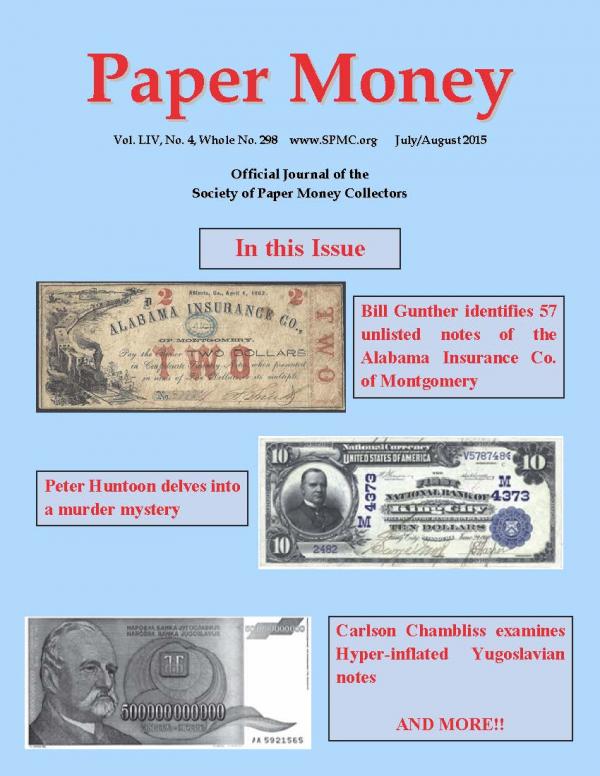Please sign up as a member or login to view and search this journal.

Table of Contents
The Alabama Insurance Co. of Montgomery
Bill Gunther............................................................ 159
King City, Missouri, Blood Money
Peter Huntoon....................................................... 175
Many Yugoslavian Notes Reflect Extreme Inflation
Carlson Chambliss................................................ 184
First Serials on Legal Tender 1928 United States Notes Jamie Yakes 190
The Great Omaha & Chicago Bank, Neb. Terr.
Marv Wurzer.......................................................... 195
Uncoupled--Joe Boling & Fred Schwann.......................... 201
Obsolete Corner--Robert Gill............................................. 210
----------------------Society and Hobby News---------------------
In Memorian Bob Cochran................................................. 212
Chump Change—Loren Gatch........................................ 214
President’s Column—Pierre Fricke.................................... 215
Editor Sez—Benny Bolin.................................................... 216
Membership Report—Frank Clark..................................... 217
Memphis was a Happenin’ Place...................................... 218
Awards at Memphis........................................................... 220
Board of Governor’s meeting minutes............................... 223
Money Mart....................................................................... 226
Tweet
More like this
- Paper Money- Vol. LVI, No. 4- Whole No. 310- July/August 2017
- Paper Money- Vol. LIII, No. 4- Whole No. 292- July/August 2014
- Paper Money- Vol. LV, No. 4- Whole No. 304- July/August 2016
- Paper Money- Vol. LVII, No. 4- Whole No. 316- July/August 2018
- Paper Money- Vol. LX- No. 4- Whole #334- July/August 2021

